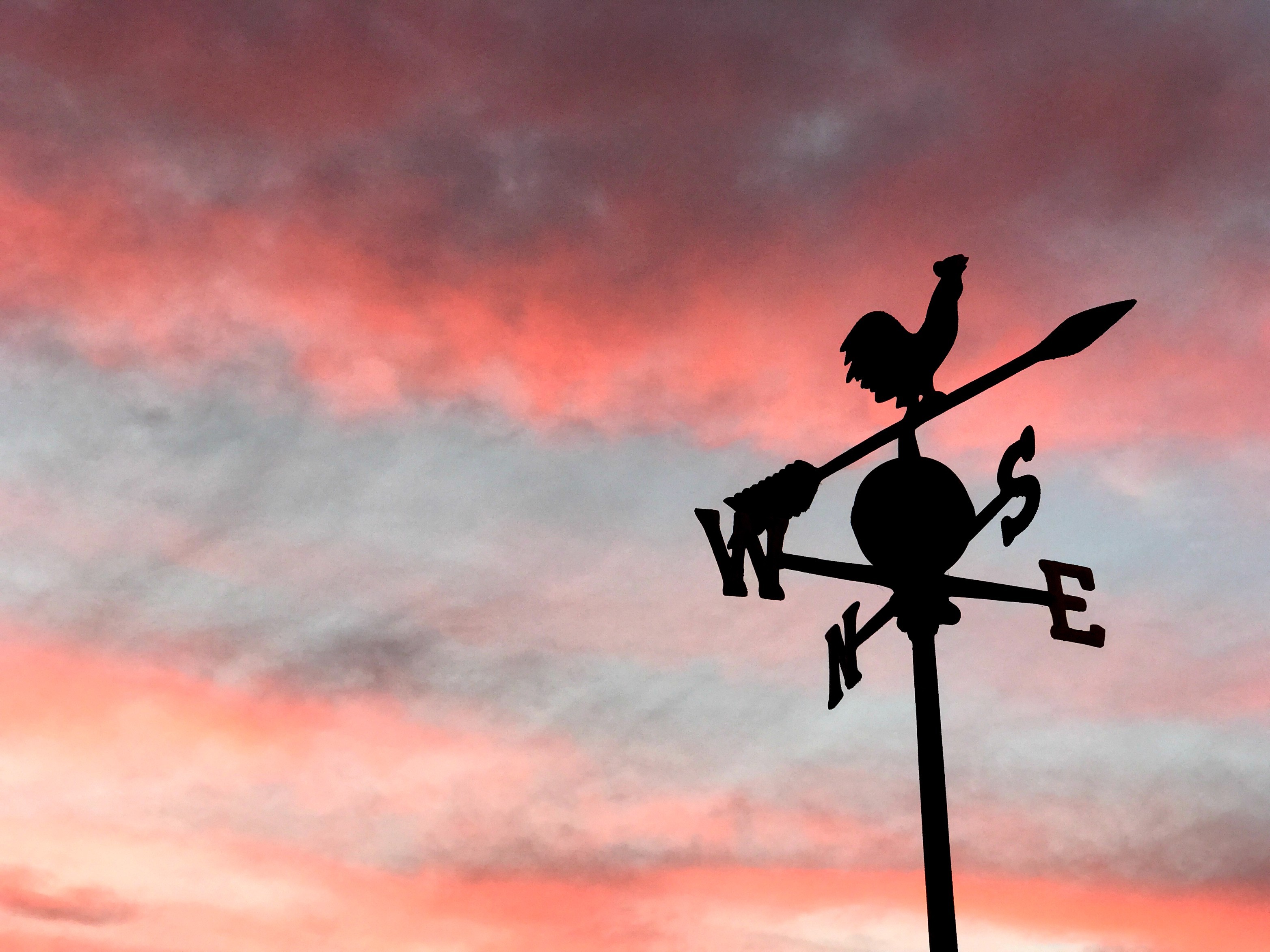It’s the pre-dawn hours, and a distinct, powerful sound pierces the stillness of the night. Cock-a-doodle-doo! A rooster’s crow echoes, sharp and clear, breaking the quiet. Then, a response, and another, a chorus building in the darkness long before the sun even hints at rising.
This is the sound of rooster life.
For many, the rooster’s crow is synonymous with daybreak, a natural alarm clock. But have you ever stopped to wonder why roosters crow? Is it simply to announce the sunrise? The truth is, rooster crowing is far more complex and fascinating than just a morning wake-up call. While hens are celebrated for their eggs, roosters often get a bad rap for their vocalizations. Labeled as noisy nuisances, their crowing is frequently misunderstood, overshadowing the vital roles they play in a flock’s social structure and survival.
In a world increasingly removed from farm life, we’ve lost much of the understanding of rooster behavior. They’re often relegated to the role of ‘just a crower’, or worse, deemed unnecessary. However, to truly understand chickens and their intricate social dynamics, we must delve deeper into the reasons behind the rooster’s iconic crow. Roosters are not just decorative farm symbols; they are integral to the well-being and functioning of a chicken flock.
Let’s explore the multifaceted reasons behind “Why Roosters Crow” and uncover the surprising roles this vocalization plays in their lives and the lives of their flock.
Unpacking the Crow: More Than Just a Morning Announcement
While the 5 AM wake-up call is infamous, rooster crowing isn’t limited to just dawn. You might hear them crowing at 10 AM, noon, 3 PM, or even 3 AM! This seemingly random vocalization has distinct purposes, deeply rooted in their natural behaviors and social roles.
1. The Timekeeper’s Crow: Announcing Safety and Social Check-ins
One primary reason roosters crow is to act as the flock’s timekeeper. Think of it as an “all clear” signal. When a rooster crows throughout the day, it’s often an announcement that everything is safe and normal within their territory. It’s a way of saying, “All is well in my world.”
For those keeping chickens, this constant crowing can actually be reassuring. In a way, it’s an audible confirmation that the flock is content and secure. These crows are not malicious sleep disruptors, but rather essential communication within the chicken community. Flocks use crowing as a form of check-in, similar to how humans use texts to ensure loved ones are safe. It’s a regular reassurance within their social group.
Beyond the general “all clear” crow, roosters also use crowing to signal the start of the day for the hens. They essentially “call” the hens to wake up and begin foraging. This is crucial for survival, as early foraging allows hens to get the first pick of food, embodying the “early bird gets the worm” principle. Roosters may also crow to signal the end of rest periods, prompting the flock to resume foraging and activity.
2. The Alarm Crow: A Cry of Danger and Protection
In stark contrast to the regular crow, the alarm call is a sharp, shrill screech that instantly puts hens on high alert. This is another critical reason why roosters crow – to protect their flock from predators. Roosters are vigilant protectors, often the first to step outside in the morning to scan for threats like hawks or owls. They only crow the “all clear” after ensuring the coast is clear. If danger is present, the alarm call erupts!
This alarm call is unmistakable. Upon hearing it, hens instinctively freeze or hide, demonstrating the effectiveness of the rooster’s warning system. Hens that ignore these alarms become vulnerable to predators. In a natural setting, a rooster’s vigilance is a hen’s best defense, significantly improving the flock’s survival chances. Some roosters are incredibly persistent, continuing their alarm calls even when predators attempt to hide, ensuring the flock remains safe.
Roosters also utilize a warning churr, a softer, questioning sound, often described as a slurred “wwwhhaaat?” This call is used for potential, less immediate threats, like birds flying overhead. It’s a cautious inquiry, prompting hens to be aware of possible danger without causing full-blown panic. This nuanced warning system shows the complexity of rooster vocalizations and their role in flock safety.
3. The Territorial Crow: Asserting Dominance and Defining Space
Roosters are territorial creatures, and crowing plays a significant role in establishing and maintaining their territory. A rooster’s crow is, in part, a declaration of ownership, a sonic fence around their domain. They crow to announce their presence to neighboring roosters, deterring potential rivals and preventing conflicts over resources and hens.
In essence, crowing serves as a long-distance communication method for territorial disputes. It’s a vocal flexing of muscles, reducing the need for physical confrontations. The frequency and volume of crowing can be influenced by the presence of other roosters nearby, creating a sort of “crowing competition” as they assert their dominance and territorial claims.
4. The Social Crow: Communication Within the Flock
Beyond alarm and timekeeping, crowing also functions as general social communication within the flock. Roosters don’t just crow at random; they crow to communicate various messages to their hens. These can include attracting attention, directing movement, or simply maintaining social cohesion.
Crowing can be used to gather the flock, especially when moving to new foraging areas or heading to roost for the night. It’s a way of keeping the group together and coordinated. Furthermore, specific types of crows can indicate different intentions or moods, contributing to the complex social language of chickens.
5. The Mating Crow: The Serenade of Courtship
Crowing is also intertwined with rooster courtship rituals. While the elaborate dance is a key element (which we’ll discuss further), crowing can be part of the rooster’s efforts to attract and impress hens. It can be used to announce their virility and availability as a mate.
The mating crow might be a variation in tone or frequency compared to other types of crows, potentially more rhythmic or melodic. It’s a way for the rooster to showcase his strength and desirability to potential mates, contributing to the continuation of the flock.
Beyond the Crow: Understanding the Complete Rooster
While understanding “why roosters crow” is crucial, it’s important to remember that crowing is just one facet of the rooster’s multifaceted role in the flock. They are far more than just noisy alarm clocks. Roosters are integral to the social fabric and well-being of chickens, playing a variety of essential roles:
- Dance Partner: Roosters engage in elaborate mating dances to woo hens, showcasing a gentler side often overlooked. These dances, involving wing-dropping, strutting, and circling, are crucial for successful mating and flock harmony. “Dancing roosters” contribute to less stressed hens, which in turn, can lead to better egg production.
-
Nest Keeper: Some roosters actively participate in nest building, preparing comfortable spaces to encourage hens to lay eggs. This “house-keeping” behavior contributes to hen comfort and can simplify nest maintenance for chicken keepers.
-
Snack Master: Roosters are often seen finding treats and calling hens to partake, demonstrating a sharing and caring behavior. They prioritize hens, often ensuring favored hens get the best morsels, highlighting social dynamics within the flock.
- Stranger Danger Defense-man: Roosters are fiercely protective, defending their flock against both animal and perceived human threats. This protective instinct, while sometimes manifesting as aggression towards humans, is rooted in their role as flock guardians. Understanding this behavior is key to managing rooster interactions.
-
Full Time Dad (Sometimes): Surprisingly, some roosters exhibit paternal behaviors, fostering chicks and providing care. This nurturing side further broadens the understanding of rooster roles beyond just aggression and dominance.
-
Referee: Roosters often intervene in hen squabbles, restoring peace and order to the flock. This role as a flock mediator contributes to social stability, although sometimes their interventions can be biased towards favored hens.
-
Comfort Animal: Well-socialized roosters can become gentle companions, enjoyed by visitors and even children. Silkie roosters, in particular, are known for their docile nature and can act as “ambassadors,” changing perceptions about rooster temperaments.
-
Cultural Icon: The rooster is a powerful symbol of farm life, representing vitality, vigilance, and connection to nature. Despite this iconic status, their importance is often overlooked in modern contexts.
Embracing the Crow
Understanding why roosters crow reveals a complex communication system and highlights their indispensable roles within a chicken flock. They are not simply noisy birds; they are timekeepers, protectors, communicators, and integral members of their communities. The next time you hear a rooster crow, take a moment to appreciate the depth of meaning behind that sound. It’s a sound of safety, of social connection, of life in the barnyard. Roosters are truly more than just their crow, they are essential leaders and vibrant characters in the world of chickens.
Want to delve deeper into the fascinating world of chickens and farm life? Explore our Shop for Products for resources and tools to enhance your learning and experience.

